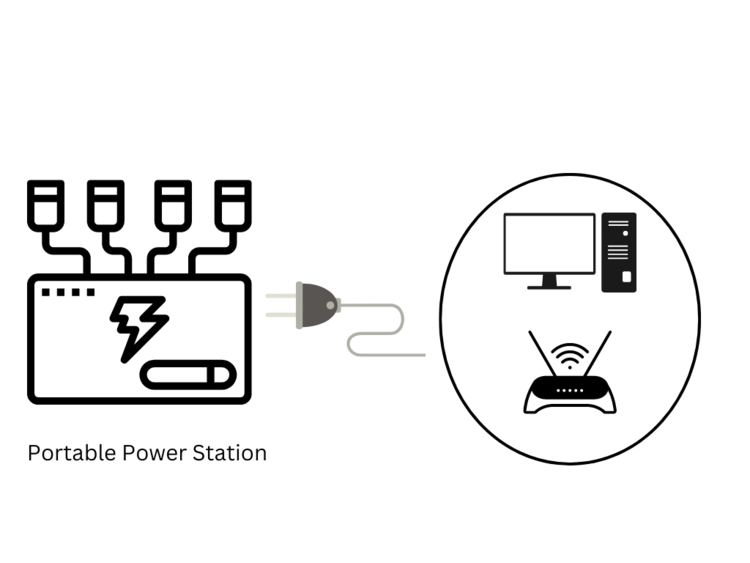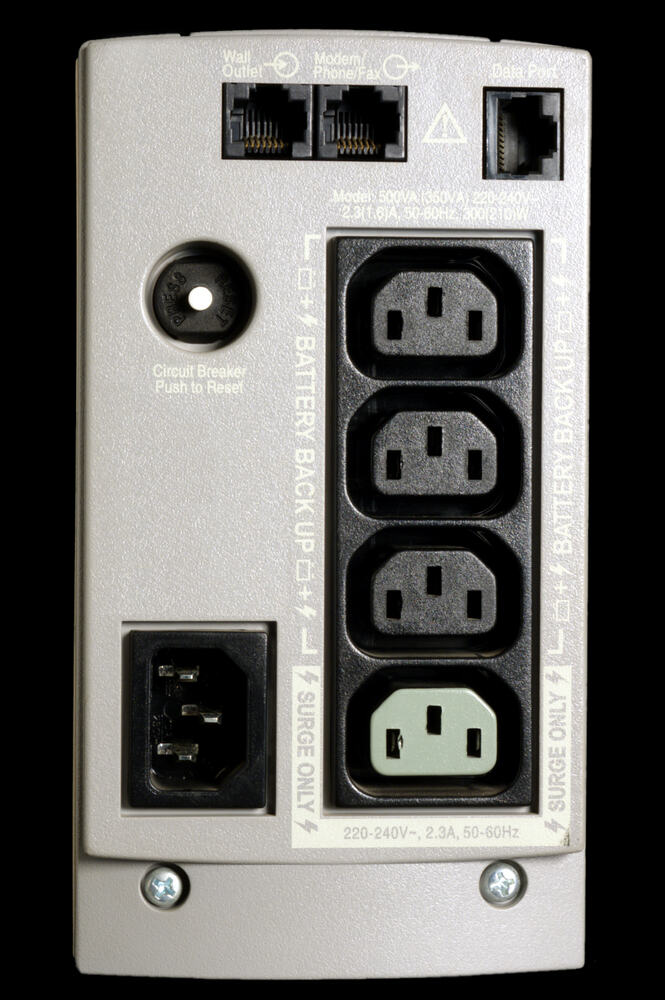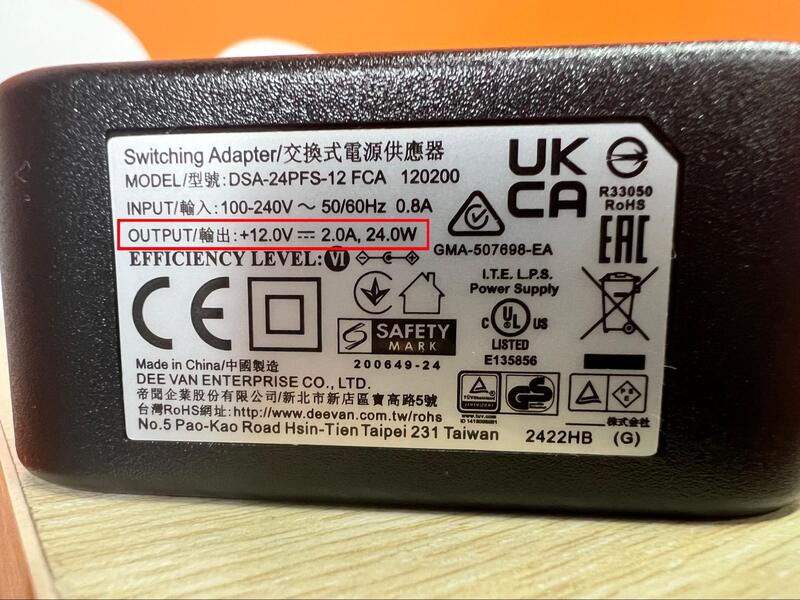Keep Your Internet Alive: The Backup Battery for Wi-Fi Router Guide

- A back-UPS battery (UPS) provides instantaneous power during outages, ideal for temporary disruptions.
- A Portable Power Station (PPS) offers extended portable backup suitable for longer outages or outdoor use.
- For those on a budget, a phone’s mobile hotspot can serve as a temporary alternative, but data limits and battery depletion are considerations.
You work remotely and have been tirelessly preparing for this big client meeting that’s in a few short days. However, due to severe lightning storms, your home’s electricity, and consequently your Wi-Fi, has been frequently cutting out.
You can not risk your router turning off in the middle of the meeting, so after some research, you’ve decided that using a back-UPS battery would be the best plan of action.
But, what exactly is a back-UPS battery? What kinds of backup batteries are available, and how do they differ? Is there another way to ensure you have an internet connection in a power outage without one?
Keep reading to find out!
Quick Navigation
What Is a Back-UPS Battery?
A backup battery is an invaluable tool for anyone who lives somewhere with frequent, but brief, power outages. It’s also often referred to as an Uninterruptible Power Supply (UPS).
There are several different kinds of USP systems, with some designed to be used for larger devices and other for smaller devices, like PCs, modems, and yes, routers. This nifty gadget stores electricity that can then be used to power any connected devices should your electricity.
While invaluable, UPS systems can cost up to a whopping $10,000, which is way out of budget for everyday consumers.
Luckily, you can opt for a power bank or Portable Power Station (PPS), which is a fraction of the price.
What Are the Different Types of Backup Batteries?
| Pros | Cons | |
| PPS |
|
|
| UPS |
|
|
While PPS and UPS power systems are similar in the sense that they will both temporarily power your router, which one will be right for you depends on your specific circumstances.
For instance, if you work remotely and need to ensure your router stays on long enough for you to quickly save any open files or properly shut down your devices, then consider using an affordable UPS.
On the other hand, if losing power doesn’t constitute an emergency, and instead, you’d like to simply use your router for a bit longer, try using a PPS instead. Whenever your electricity goes out, you can plug your devices and router into one of the PPS’s many outlets and continue using them as normal.
How to Setup UPS and PPS
Let’s learn how to set up these two life-saving backup batteries!
UPS
Follow the steps below to connect devices to a UPS.
Step 1: Plug your UPS into a stable power source. Do not plug it into a power strip.
Step 2: Firmly connect your router’s power cable to one of the UPS’s various outlets.
Step 3: Turn your UPS on and check that the router is receiving power. You’ll know it’s on when its LED indicator lights are illuminated.
Step 4: Keep your router plugged into the UPS to ensure it remains powered in the case of a power outage. You can also plug other important devices into the UPS as well.

PPS
Step 1: Fully charge the PPS and turn it on. The last thing you’d want is to find out it’s out of charge during a power outage!
Step 2: During a power outage, connect your router’s power cable to one of the PPS’s outlets.
Step 3: Then, check that the router is turned on and properly powered.
Step 4: Now you’re ready to continue using your home’s Wi-Fi in the event of a power outage! Just don’t forget to charge your PPS once the power turns back on to ensure it’s ready for the next outage.

Please note that certain PPSes do not feature a pass-through charging function. This means that they can not charge any connected devices while being simultaneously connected to power. Plugging your router into a powered PPS without this function could damage it.
The Difference Between UPS and PPS?
So, you know what UPSes and PPSes are, and how they work, but you’re still unclear about the differences between the two. Have no fear! We’re here to clear up any questions and help you make the right choice about which backup battery is best for you.
Let’s learn about the technical differences between UPS and PPS!
UPS

In the most basic sense of the word, a UPS is a battery that stores electricity to be used later. It’s charged by being plugged into an electrical outlet. Then, when the power goes out, you can plug your devices (e.g. Wi-Fi router, PC, smartphone) into them to keep them powered or charged.
When your home’s power goes out, your UPS will activate and temporarily power the connected devices. How long your UPS will stay powered depends on its brand and, of course, how many devices are connected to it. However, many UPSes will stay powered for four to five hours. This should give you plenty of time to save any documents, finish up a Zoom call, or make any necessary arrangements if you predict the power outage will last longer than expected.
However, UPSes are mainly used to protect a company server’s downtime and ensure valuable information isn’t lost on account of a power outage.
While UPSes are generally more expensive than their portable counterparts, there are a few versions that are affordable enough for everyday consumers. That said, their runtime is much lower than higher-end brands and you’ll likely only have enough time to shut down your devices.
If you’re on the hunt for an affordable UPS, check out the Amazon Basics Standby UPS 600VA 360W . You have the option of selecting how many outlets you need as well.
PPS
While PPSes and UPSes serve the same purpose in that they both act as a backup power supply for devices, PPSes are portable and act like a power bank. This means that they don’t need to be plugged into power to provide electricity to connected devices.
This makes them the ideal choice for anyone who loves to go camping, on road trips, or lives off the grid.
As is also the case with UPSes, a PPS’s runtime depends on how many devices are connected to it as well as the devices’ wattages.
If you’re looking for a reliable PPS with a runtime of four hours, the Jackery PPS Explorer 160 comes highly recommended by our team. It weighs under four pounds, making it light enough to put your backpack on a hiking trip.
Alternatively, you can accurately calculate a PPS’s runtime using the following formula:
The product total capacity * 0.85 / Watt required = hours of usage
Let’s demonstrate how to apply this formula using the Jakery PPS as an example.
The Jackery PPS’s total capacity is 167Wh.
We also have to account for the natural system losses, which in this case will be represented by 0.85.
You can find the device’s wattage printed on the device (e.g. on a sticker on the back of the router). Or, you can calculate it yourself using the formula: P (Watt) = E (voltage) * I (current)
Then, all you have to do is plug this information into your formula as shown below:
167Wh * 0.85 / (device’s operating power)
But, let’s go one step further and calculate the final run time using a 24W router as an example.

So, if we insert 24W into the formula’s “device’s operating power,” we end up with this solution:
167Wh * 0.85 / 24 W ≈ 5.9 hours
Bear in mind that while the final solution should be accurate, it’s only an estimate. It’s possible that your PPS may not last as long due to other factors.
Alternative Solution: Using Cellular Data For Ease
UPSes and PPSes are undoubtedly useful, but they are an investment that not everyone is willing to make.
So, if you’re not in the position to make any big purchases at the moment, consider using your phone’s mobile hotspot instead.
![]()
This solution is by far the easiest since you won’t need to make any additional purchases and it only takes a moment to set up.
However, there are some downsides to be aware of.
The first is that many mobile plans have a data cap, which when exceeded, may cause your hotspot to throttle or be shut off completely. Alternatively, your account may be charged for any additional data used, which can quickly become expensive.
Hotspots use more data than simply using cellular data on your phone, especially if there are multiple devices connected to it. We also recommend avoiding any high bandwidth activities that will eat up your data more quickly, like streaming or downloading/uploading large files.
That said, you won’t have to worry about any of these limitations if you have an unlimited data plan.
However, the second downside to using a mobile hotspot applies to all users, regardless of their data caps or lack thereof.
Hotspots rapidly consume your smartphone’s battery, which may not be ideal if you don’t have a way to charge your phone. In severe weather events having a working phone can be life-saving, so it’s always best to ensure your phone is sufficiently charged just in case the situation takes a turn for the worst.
If you do need to use your phone’s hotspots during power outages, consider using a power bank to keep it charged.
It’s also a good idea to enable your phone’s Low Power mode if possible.
Wrapping Things Up
Power outages can be frustrating, and at times, down-right scary. But, being prepared is key to ensuring a small glitch doesn’t result in major consequences.
If you’re looking for a backup battery for your home, a UPS may be the right choice for you. But, if you want to charge your devices on outdoor adventures, it’s best to invest in a PPS.
UPSes are better for temporary outages, while PPSes are the ideal choice if you expect the power to be out for several hours at a time.
If either of these devices is out of your budget, try using your smartphone’s mobile hotspot instead. Not only is it convenient, but it’s cheaper too. Just keep a close eye on your phone’s data usage and battery life.
What’s your experience using a backup battery for a Wi-Fi router or other device? Do you prefer to use a UPS or a PPS?
Let us know in the comments below!
Yesenia Achlim is a technical copywriter and editor with a focus on AV equipment. She aims to break down complicated topics and make technology accessible, no matter your technical expertise. When she’s not teaching you how to replace a projector lamp, you can find her reading and baking.

